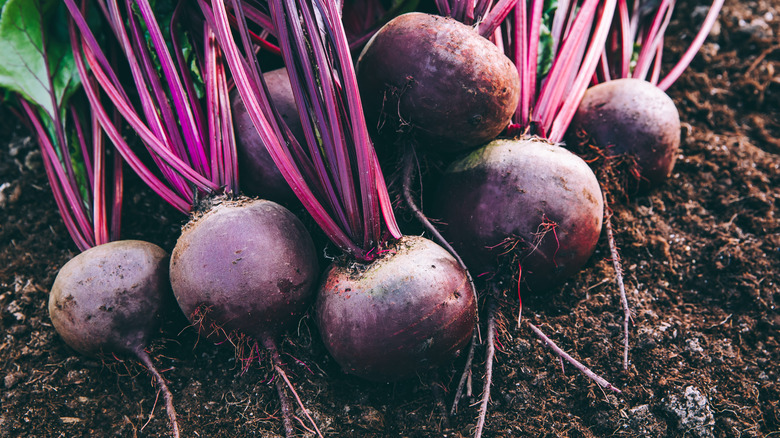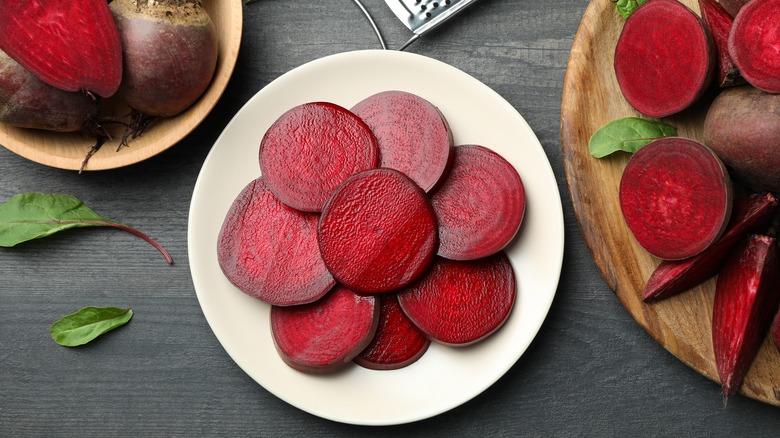Why You Should Wait To Peel Beets Until They're Cooked
Beet season is finally here which means there are a lot of beautiful dishes you can make with this root vegetable when it will be at its tastiest, well that is unless you are Michelle Obama, who, Refinery 29 reports, is not overly fond of the beet. Yes, beets have their fair share of taste bud enemies and advocates. According to the Los Angeles Times, beets are a winter vegetable despite the fact that you can buy them year-round from your supermarket of choice. From about November through "late winter," beets are at their optimal flavor and in all of their red, orange, white, and gold glory. Whether you are a fan of a homemade chewy beet salad or like to make a beet slaw for dinner, beets can add some wonderful nutrients to your diet.
Sure, beets seem to stain just about everything they touch, including our fingers, according to Bon Appétit. But per Healthline, beets are a powerhouse of vitamins and minerals containing a healthy amount of fiber, potassium, iron, and vitamin C. They are a delicious addition to a healthy diet. But if you are new to cooking with beets or just want to stay on top of your beet knowledge, you may want to stop peeling your beets until you have cooked them, and here's why.
Use a paper towel
Bon Appétit shares that peeling your beets after you cook makes removing the skin a much easier process than doing so prior to cooking. The cooking site goes on to explain that after you cook an unpeeled beet, it will "pop right out" of its skin. It's truly that easy. Bon Appétit goes on further to express that the only time you need to peel a beet and get rid of the bitter taste the skin imparts is when you are eating them raw and making a slaw or a cold beet soup.
However, when it comes time to actually peel your beets, Evolving Table suggests several different methods to accomplish this task. Whether you're using a paper towel as you pull back the skin, a paring knife, or your bare fingers, there are plenty of ways to get your beet peeled. Evolving Table notes that regardless of your preferred method, you want to allow the beet to cool. And generally speaking, you only need to break out the paring knife if the beet has particularly tough skin. But the beauty of using a simple paper towel, per Real Simple, is the fact that you can rub the beet with this paper cloth and easily remove all the skin through friction.

